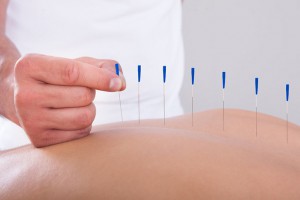Dry needling and acupuncture, the needles look the same, but how are the different? The common denominator between each technique is the very fine needles.That’s where the similarities end.
Acupuncture
Acupuncture is used by practitioners of traditional chinese medicine. Acupuncture is used to treat a large scope of conditions ranging from infertility to high blood pressure.
An acupuncturist will determine the positioning the needles your symptoms, based on your complaint. The needle positioning is determined by 12 meridian pathways. The needles are placed at specific meridian points, which correlate to specific body systems and internal organs.
Dry Needling
Dry Needling is the use of acupuncture needles to decrease the tone and tension of muscles and fascia. It is effective for the treatment and relief of pain associated with musculo-skeletal pain and sports injuries such as low back and neck pain. Dry needling is a technique used by chiropractors and other health professionals.
Dry needling is based on western anatomical and physiological principles. Dry needling has numerous benefits;
- increase blood flow at site of injury which will increase healing
- a neurological response which will cause the release of pain inhibiting hormones
- reducing muscle spasm
- reducing pain
Dry needling is most effective when is used in conjunction with other treatment techniques, such as chiropractic joint manipulation/ mobilisation, myofascial release and exercise rehabilitation. It is effective for the treatment of tension headaches, neck pain low back pain, sciatica and sports injuries.
Vaughn Bolack- Fluid Chiropractic


